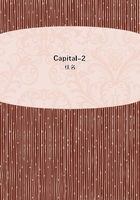
第102章
This wholly contradicts Ricardo's doctrine of value, likewise his theory of profit, which is in fact a theory of surplus-value. In general he considers the distinction between fixed and circulating capital only to the extent that different proportions of both of them in equally large capitals invested in different branches of production influence the law of value, particularly the extent to which an increase or decrease of wages in consequence of these conditions affects prices. But even within this restricted investigation he commits the gravest errors on account of his confusing fixed and circulating with constant and variable capital. Indeed, he starts his analysis on an entirely wrong basis. In the first place, in so far as the part of the capital-value laid out in labour-power has to be classified under the head of circulating capital, the definitions of circulating capital itself are wrongly developed, particularly the circumstances which place the part of capital laid out in labour under his head. In the second place there is a confusion of the definition according to which the part of capital invested in labour is variable capital with the definition according to which it is circulating capital, as opposed to fixed capital.
It is evident at the outset that the definition of capital invested in labour-power as circulating or fluent capital is a secondary one, obliterating its differentia specifica in the process of production. For in this definition, on the one hand, the capitals invested in labour are of the same importance as those invested in raw material, etc. A classification which identifies a part of the constant capital with the variable capital does not deal with the differentia specifica of variable capital in opposition to constant capital. On the other hand the parts of capital laid out in labour are indeed op-posed to those invested in instruments of labour, but not in the least with reference to the fact that these parts enter into the production of value in quite different ways, but with reference to the fact that both transfer their value to the product, but in different periods of time.
In all of these cases the point at issue is how a given value, laid out in the process of production of commodities, whether it be wages, the price of raw materials, or that of instruments of labour, is transferred to the product, hence is circulated by the product, and returned to its starting-point by the sale of the product, or is replaced.
The only difference lies here in the " how ," in the particular manner of the transfer, and therefore also of the circulation of this value.
Whether the price of labour-power previously stipulated by con-tract in each individual case is paid in money or means of subsistence does not alter in any way its character of being a fixed price. However it is evident in the case of wages paid in money that the money itself does not pass into the process of production in the way that the value as well as the material of the means of production do. But if on the other hand the means of subsistence which the labourer buys with his wages are directly classed in the same category, alongside raw materials, etc., as the material form of circulating capital and are opposed to the instruments of labour, then the matter assumes a different aspect. If the value of these things, of the means of production, is transferred to the product in the labour-process, the value of those other things, the means of subsistence, reappears in the labour-power that consumes them and is likewise transferred to the product by the functioning of this power. In both these cases it is equally a question of the mere reappearance, in the product, of the values advanced during production. (The physiocrats took this seriously and there-fore denied that industrial labour created surplus-value.) Thus the previously quoted [Karl Marx, Capital , Vol. I, p. 207, Note 3. -- Ed .]
passage from Wayland. "The form, however, is of no consequence. . . . The various kinds of food, clothing, and shelter, necessary for the existence and comfort of the human being, are also changed. They are consumed, from time to time, and their value reappears. . . ." (Elements of Pol. Econ., pp. 31, 32.) The capital-values advanced for production in the form of both means of production and means of subsistence reappear here equal-ly in the value of the product. Thus the transformation of the capitalist process of production into a complete mystery is happily accomplished and the origin of the surplus-value existing in the product is entirely withdrawn from view.
Furthermore this brings to completion the fetishism peculiar to bourgeois Political Economy, the fetishism which metamorphoses the social, economic character impressed on things in the process of social production into a natural character stemming from the material nature of those things.
For instance, "instruments of labour are fixed capital," is a scholastic definition, which leads to contradictions and confusion. Just as was demonstrated in the case of the labour-process (Buch I, Kap. V), [English edition: Ch.